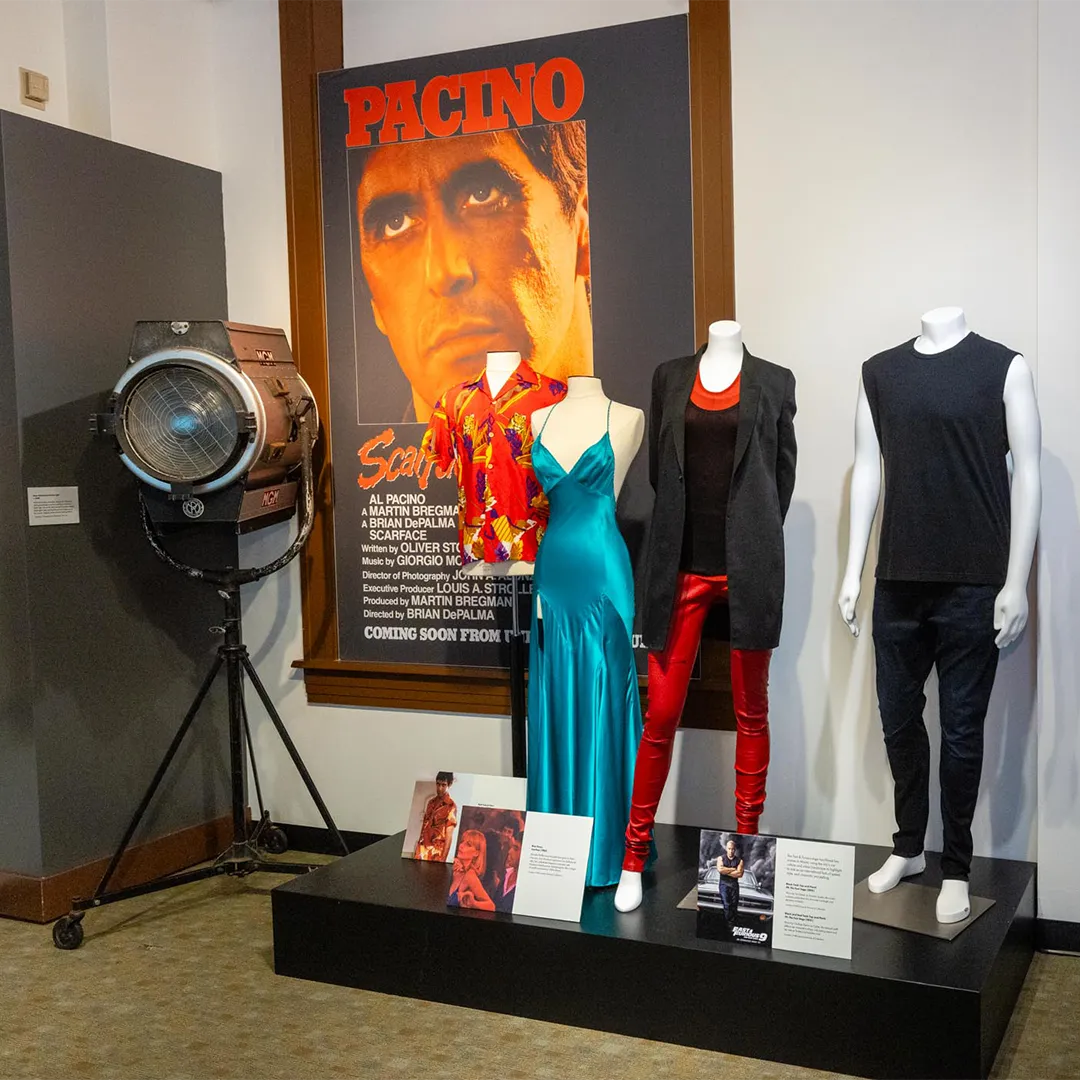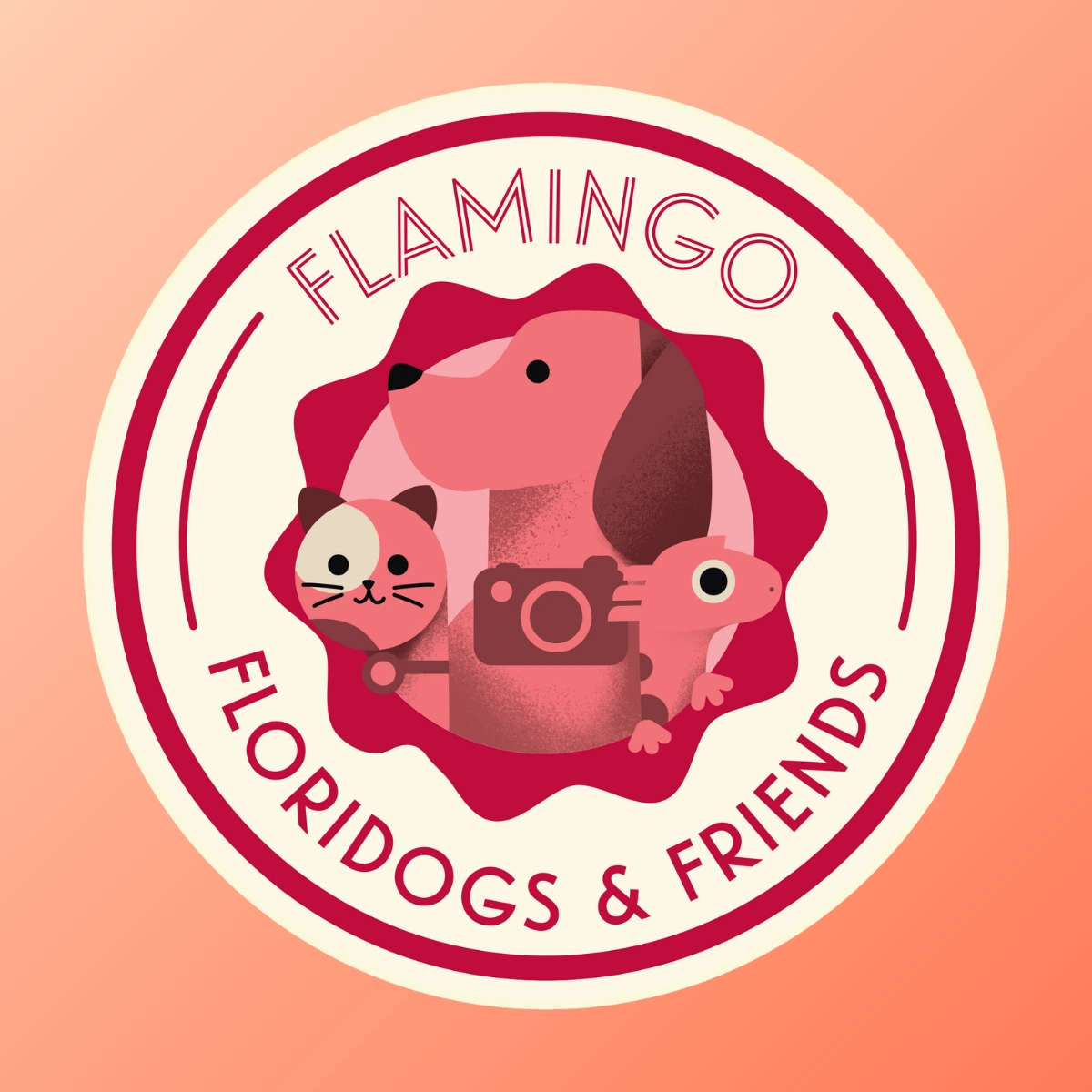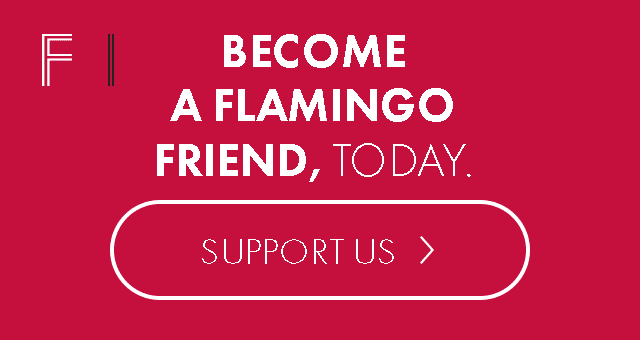by | June 3, 2019
The Space Coast’s Glory Days, 50 years after Apollo 11’s Moon Mission.
A writer reflects on her personal connection to Florida's space coast, where her parents first fell in love and where innovation is taking hold once more.

It’s a childhood memory seared onto my brain as much as learning to ride a bike and losing my first tooth: watching a live space shuttle launch on Florida’s Space Coast.
It was early April 1983, and for an 8-year-old kid, seeing the sixth-ever shuttle launch during spring break would come with some serious bragging rights. My dad pulled our Subaru GL off A1A in Port Canaveral amidst a jumble of cars and hundreds of spectators, all there for the unobstructed views of Launch Pad 39A at the Kennedy Space Center across the Banana River. We arrived early to get a parking spot, and my younger brother and I grew restless in the midday heat as we waited. The anticipation in the air was as thick as the humidity, the suspense building as—finally—the official countdown started, blaring from countless radios: T-minus 40, 39, 38…. My body practically reverberated with excitement as each second ticked off.
Then, liftoff: a stupefying blast of flames and smoke billowing from the launch pad as Challenger, pointed toward the cosmos, rose up, up, up, hitched to the rocket that would propel her to 184 nautical miles into the sky. The roar took a few seconds to reach us, deep and almost primordial, vibrating in our chests, rattling teeth in sockets. Nearby spectators erupted into jubilant cheers, but I just stood there, slack-jawed and speechless as the shuttle surged from earth into space, the rocket’s tail aglow in a surreal, neon-orange stream of firepower. Countless necks craned to watch Challenger arc across the sky, magnificent contrails pluming behind as she eventually soared out of sight. Not a bad way to kick off her maiden voyage, a five-day, 2.1-million-mile journey.
Plan to see a Rocket launch live this summer.
Some version of this scene—different shuttle and spectators, same mood of reverence and awe—would repeat itself 129 more times during the 30-year history of NASA’s space shuttle program. By the time the program began in 1981, Florida’s Space Coast, a 72-mile stretch of coastline about 45 minutes east of Orlando, had already been firmly established as a hub of national pride, sparked by President John F. Kennedy’s quest—immortalized in his famous May 1961 speech —to put a man on the moon as part of a pioneering space exploration program. Kennedy’s vision, in turn, put this Atlantic midsection of the state—with its coastal location (so rocket debris could fall into the water instead of onto populated areas) and relative proximity to the equator (to take advantage of the earth’s rotational velocity) well-suited to launches—on the world stage.
The region was hit hard by the 2008 recession, and when the last space shuttle landed in 201l, much of the workforce and tourism went with it, leaving a virtual ghost town of abandoned launchpads and warehouses. But these days, the Space Coast is abuzz with activity once again, as big-name private-sector companies like SpaceX and Blue Origin, plus plenty of up-and-coming startups, breathe new life into the area’s long-neglected space infrastructure, lured by multimillion-dollar government contracts and subsidies. Even if you’re not a space geek, there’s a contagious excitement in the industry these days as NASA and the private sector forge into remarkable new frontiers of reusable rockets; commercial space travel; the first launch of American astronauts on American rockets from American soil in nearly a decade; and, eventually, human civilization on distant planets.
Thrilling new horizons, no doubt. But this summer is ripe for reflection on how, and where, it all got started: July 20 marks the 50th anniversary of the historic moon landing, when Neil Armstrong took one small step for man, one giant leap for mankind, on a groundbreaking Apollo mission launched from Launch Pad 39A on Florida’s Atlantic Coast.

GLORY DAYS
If you think about it, I just might owe my very existence to JFK’s determination. My parents, Bob and Charlotte Bachelor (née Lamb), met in 1969 during a party in my mom’s first-floor apartment in a Cocoa Beach complex called Palms East, which is still there. Like tens of thousands of other 20- and 30-somethings, my mom was lured by the explosion of jobs in Brevard County during the space race. Around the region, powerhouse players like Boeing, Lockheed Martin, IBM and McDonnell Douglas brought on the legions of manpower necessary for going where no man had gone before: tens of thousands of engineers, scientists and statisticians. More than 20,000 companies and 350,000 people were involved in space exploration in some way during the Apollo program’s peak in 1966.
“It was just like a big house party with lots of young people,” as my mom describes it.
My mom, a math whiz, worked first as a clerk for Bendix, a company that supplied and tracked rocket engine propellants; Boeing soon hired her away as a cost analyst. My dad, meanwhile, was an Air Force lieutenant newly stationed at Patrick Air Force Base. His job sometimes brought him into contact with NASA: Several times, he briefed Kurt Debus, the German-born rocket scientist who was the first director of Kennedy Space Center; another time, he talked his way onto a mission of an EC-135 ARIA aircraft, which were modified Boeings tricked out with high-tech equipment to collect data from manned spacecraft. He was on one of two ARIA planes that transported moon rocks back to the Cape from the Apollo capsule after its ocean splashdown (two ARIA aircraft were always used for missions like this, in case one went down).
Like what you read? Click Here to Subscribe.
Neither of my parents remember too much about their first meeting, except that my dad brought a bottle of Crown Royal to the party—highbrow booze for my mom’s Busch-drinking crew. But there must have been a spark of something, because my dad got my mom’s number and eventually asked her out. They started dating in Cocoa Beach and married five years later, moving right after their wedding to Edwards Air Force Base, California, so my dad could attend Test Pilot School. Soon after that, my brother, Jason, and I came along. We were both born in Valparaiso, a small Panhandle town where my parents still live, after our family moved back to the area in 1987 following my dad’s retirement from the Air Force. But my brother and I grew up enchanted by the lore of our parents’ lives B.C.—Before Children—and especially by stories from magical-sounding places like Cocoa Beach and Cape Canaveral, where their orbits first collided.

Everything about the era seemed so cool: the Ron Jon T-shirts they bought from the world-famous Cocoa Beach surf shop and wore holes into; those legendary Palms East parties, like the one where they ran out of daiquiri mix and someone had the brilliant idea to instead use jelly beans as a mixer; how my mom was nicknamed “Charlie” by her mostly male colleagues; Friday happy hours at the Mouse Trap, an infamous hotel bar where astronauts and mere mortals mingled over on-the-rocks martinis; and snippets of my dad’s work life, some more obscure than others (if he ever responded to a question with “I can’t answer that,” my brother and I knew to immediately follow up with “Why? Is it classified?”). It all created a sense of wonder about a particularly poignant time in American history—and my parents’ place in it—that stayed with me throughout my life.

Seeing the Challenger launch was the highlight of that 1983 spring break trip for my brother and me. But it wasn’t until I visited the Kennedy Space Center six years ago, as an adult with my folks and husband, that I began to appreciate the enormity of the United States’ achievements in space — as well as my parents’ roles, however small, in them. Sitting in a replica Gemini capsule, I felt the squeeze of impending claustrophobia; it was impossible to fathom spending days in such tight confines (big props to Apollo 11 command module pilot Michael Collins, who never earned household recognition like Armstrong or Buzz Aldrin but deserves just as much credit). As we entered the Apollo/Saturn V Center—also known as the Vertical Assembly Building, or VAB, where rockets were built and where my mom had an office decades ago at her Boeing job—I was gobsmacked by the sheer size of the building itself: a massive rectangle that spans 8 acres and soars 525 feet high. But the real showstopper was the Saturn V rocket, the largest ever flown through space. At 363 feet tall (it’s got 60 feet on the Statue of Liberty), it’s displayed on its side so visitors can get an easier look at its three stages (that’s industry speak for sections). Gazing up at this beast, I was awestruck yet again.
My parents, meanwhile, were abuzz reliving memories of their time on the Cape. During the bus ride to the VAB, my dad told a story about seeing an experiment to test an emergency escape procedure from the capsule. Simulating an astronaut, a dummy was attached to a wire from Pad 34 to the VAB and released. But the dummy slammed into the automatic brake at high speed, its legs whipping over its head, which would have spelled disaster for a real human. “I saw that and said, ‘Well, it’s back to the drawing board,’” my dad recalled. My mom remembered watching her first launch, of an unmanned Titan rocket, during her Bendix job in a small trailer near the beach: “It was like being out there in the sticks,” she said. The rocket exploded midair, debris drifting down like snow onto the group of onlookers. Throughout the day, I found myself as impressed by my parents’ insights as I was by the exhibits themselves.
That hot July day also offered something a bit more meaningful for me. Less than two months prior, my husband and I had lost a much-wanted pregnancy. I was drowning in heartbreak. But immersing yourself in a living museum that celebrates the bravery, ingenuity and perseverance of the human spirit in the face of enormous obstacles offers beacons of hope—as well as a refreshing distraction, even for just a few hours—as you muddle through the worst grief of your life.

I found myself especially entranced by the $100 million Atlantis exhibit, which had opened about a month prior to our visit. I was mesmerized by this marvel of engineering just a few feet from me, rotated as if in midflight, payload bay doors open—a view that, to this point, had been seen only by astronauts. I was bursting with patriotism, no doubt. But Atlantis also struck a personal chord. At one point, we had both carried human life. We’d both been banged up and battered by the forces of the universe, although her scars—scratches and scrapes on her nose, flecks of space dust on her fuselage—were more visible than mine. Yet, here we both were.
NEWSPACE
Much has changed on the Cape—and in the aerospace industry itself—in the six years since that last visit to my parents’ old haunts. Boosted by this new chapter of the space industry, the region has lifted itself from the economic slump that hit after the ending of the shuttle program, which led to double-digit unemployment and a severe dip in tourism, too.
By some estimates, the surging NewSpace industry, as it’s often called, could reach $2.7 trillion in the 2040s. As a result, the Space Coast is once again booming, just like it was a half-century ago during that historic Apollo lunar landing mission. It’s a delight to watch unfold, even from afar, as I now live in San Francisco. Each piece of exciting space-related news from Florida’s Atlantic coastline some 3,000 miles east always warms my heart, a piece of which will always reside there.
Over the last five years, more than a dozen (and counting) aerospace companies have set up shop in the area, according to Dale Ketcham, vice president of government and external relations for Space Florida, a state-funded aerospace economic development group. And they’re making constant headlines. In early March, SpaceX nailed a test run of its unmanned capsule Crew Dragon from Cape Canaveral, paving the way for the company to be the first to launch two astronauts into space from American soil since 2011. In late February, Firefly, a Texas-based startup and one of several companies that specialize in lightweight rockets that will haul satellites into space, announced its plans to spend $52 million to renovate Space Launch Complex 20 and manufacturing facilities at Exploration Park. Meanwhile, Relativity Space, which builds rockets using 3D technology, secured an Air Force contract to use Launch Complex 16; the company plans to put the first 3D-printed rocket into space by 2020, potentially marking another first for Cape Canaveral. Of course, there have been setbacks along the way, too, including a high-profile SpaceX rocket explosion. But the victories far outnumber the mishaps.

Not surprisingly, jobs have soared as well, with the unemployment rate dropping from a high of nearly 12 percent in November 2010 to 3 percent in December 2018. Tourism, meanwhile, is on the rise, with hotels preparing for large launch crowds, and area shops and restaurants reaping benefits too. In 2019, 32 launches have already been scheduled, with government officials targeting 48 by 2021. By Space Florida estimates, that number could increase to around 100 annually within the next five years, paving the way for a new era of growth.
My life, too, looks quite different these days. Most notably, I’m now a mother, a seemingly miraculous blessing that came after three tumultuous years following that devastating loss in 2013. My son is almost three, and, just like my father, his GrandBob, he is obsessed with aviation, often spotting “o-planes”—that’s toddler-speak for airplanes—high in the sky that my husband and I have to squint to see and constantly begging us to go the “o-port.” It’s not out of the realm of possibility that he could one day visit the moon on a spring break trip—or follow in the footsteps of his grandparents as part of a revolutionary workforce that takes humans to even farther reaches of the galaxy.
For now, though, my husband and I are keeping things a little closer to home and starting to plan when we’ll take our little guy to his first rocket launch at the Cape. Here’s hoping the experience sparks the same kind of wonder in him that I felt so often in my own childhood, thanks to a party my mom threw that a young Air Force lieutenant happened to crash and a country hell-bent on putting a man on the moon.





